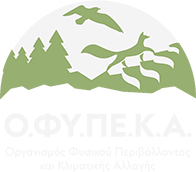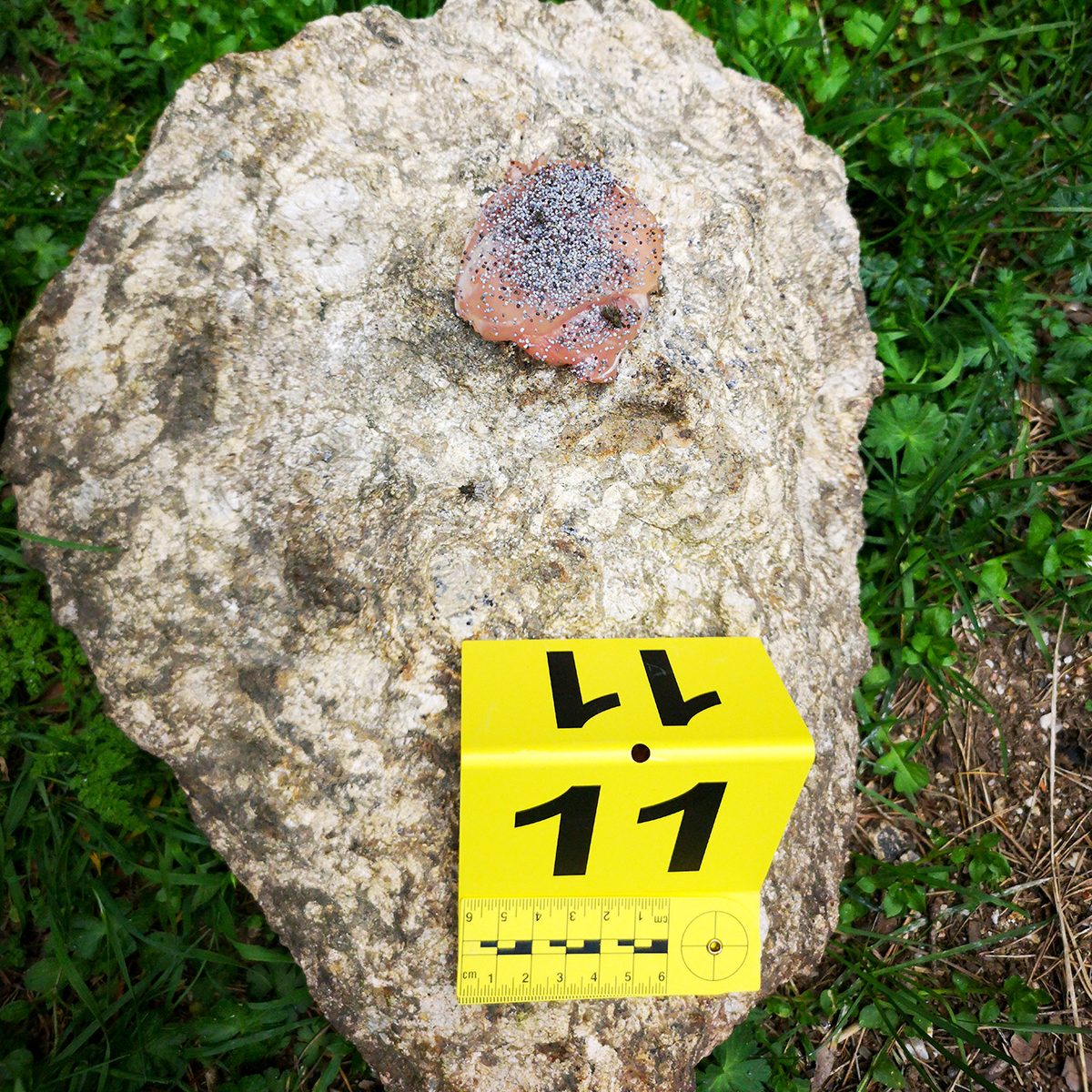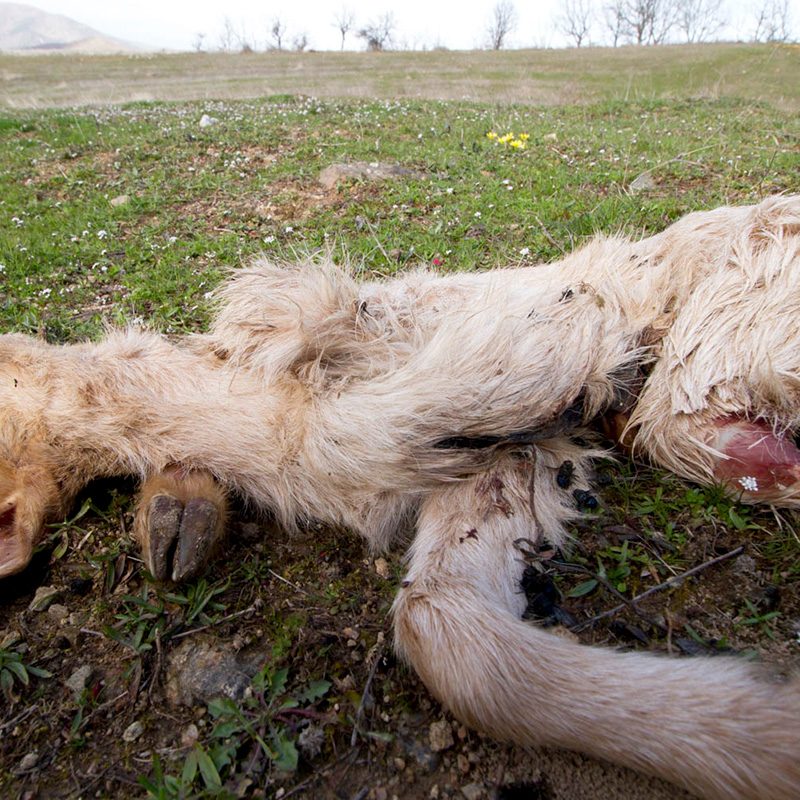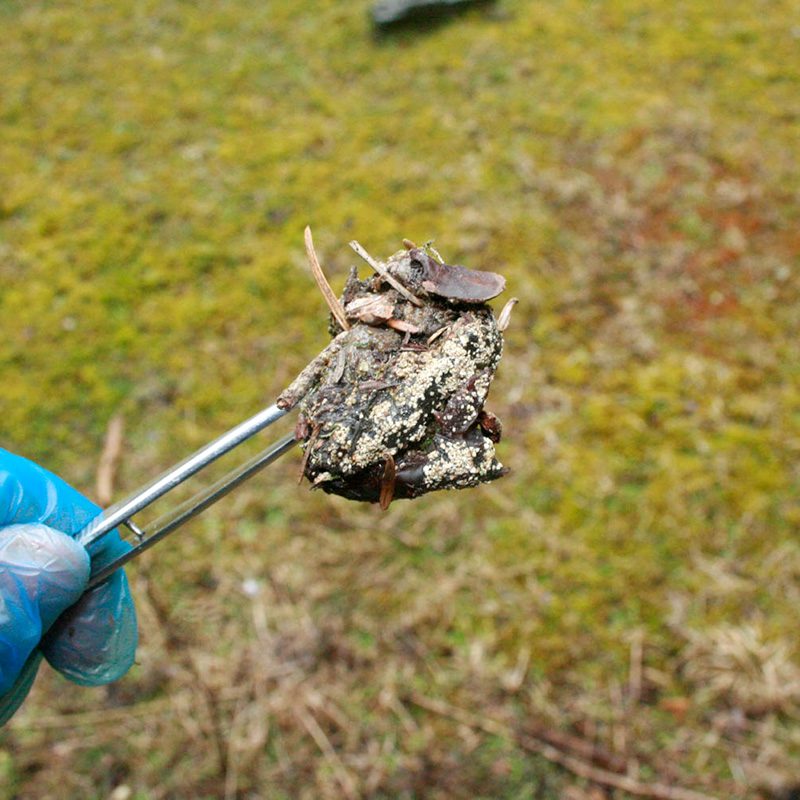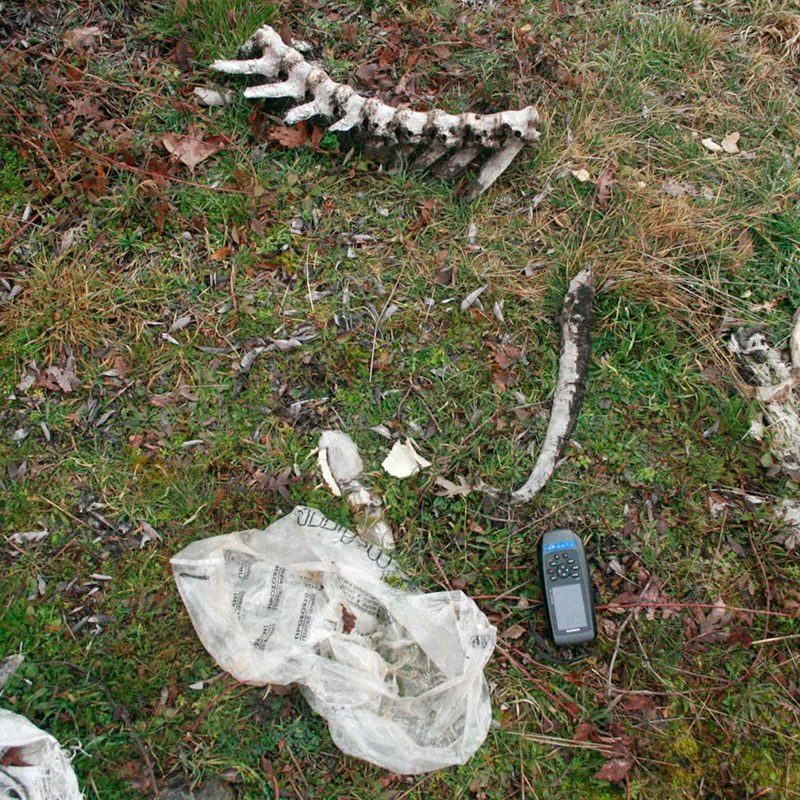The problem

The use of poisoned baits is one of the most critical threats to carnivorous wild animals. Its victims are mainly mammals, such as foxes, wolves, bears and birds of prey – especially avian scavengers such as Vultures, Golden Eagles and other large predators.
Indicative of its impact on these species is the fact that only in the past twenty years (2000-2020), almost 350 foxes have died from poisoned baits in more than 100 wildlife poisoning incidents, while the next most numerous poisoning victim is the Griffon Vulture with more than 200 dead individuals in over 150 incidents. These numbers are only the tip of the iceberg, as it is estimated that, depending on the species, only 3-15% of poisoning victims are identified and recorded (de la Bodega, Cano, Mínguez, 2020)

Γυπαετός © Πάνος Περαντωνάκης / Ελληνική ΟΡΝΙΘΟΛΟΓΙΚΗ Εταιρεία
Impact on wildlife
In many cases, this illegal practice has led to the extinction of rare and endangered species in Greece, such as the Bearded Vulture (which is extinct from the Greek mainland and still exists only in Crete), the Cinereous Vulture (which exists only in Dadia-Lefkimi-Soufli Forest National Park) and the Egyptian vulture, the most endangered species of Greece, with only four (4) pairs remaining in the entire country.
It is worth mentioning that vultures are not the main target of poisoned baits, as they do not cause damage to any human activity, they are nevertheless often victims of secondary poisoning, since poisoned baits do not discriminate. As a result, it is a sad fact that today there are only 30-35 pairs of Cinereous Vulture and just 20 pairs of Griffon Vultures left thoughout the Greek mainland, while Crete hosts a healthier population of this species as well as the last 8-10 pairs of Bearded Vultures of the country.

Ασπροπάρης © Αντώνης Στούμπας / Ελληνική ΟΡΝΙΘΟΛΟΓΙΚΗ Εταιρεία
The poisoning of wildlife is illegal and prosecuted by law, while it is very important to stress that it is a non-selective method of prosecution. Once a poisoned bait is placed in nature, it is impossible for someone to control which animal or species will consume it.
In addition, placing a poisoned bait in nature initiates a vicious cycle of death, since once an animal ingests a poisoned bait, it turns itself into a potential poisoned bait, causing secondary poisoning to other animals when consuming it. As a result, a chain of death is created, with each link consisting of dead animals. Animals that are scavengers, such as vultures, can very easily fall victims to secondary poisoning because it is their inherent biological function to “clean” nature from carcasses. But when they consume an animal that has died due to poisoning, they also die, while it is also possible for them to have carried part of the bait away from the site, oftentimes even as far as their nest in order to feed their young chicks.

© Δημήτρης Βαβύλης / Ελληνική ΟΡΝΙΘΟΛΟΓΙΚΗ Εταιρεία
Impact on domestic, stray and working animals
The use of poisoned baits in the nature not only affects wildlife, but also affects domestic and stray animals -such as cats and dogs- as well as working animals, such as hunting dogs, shepherd dogs and truffle dogs. It is not a coincidence that in all the recorded incidents of poisoning, dogs are the most frequent victims. This fact also means that this practice is not only harmful to wildlife but it also results in financial losses to land users, especially those who own working dogs, many of which of specific breeds that are difficult to purchase or may have undergone expensive training.

© Vulture Conservation Foundation
Impact on public health
In addition to its devastating consequences for wild, domestic and stray animals, the use of poisoned baits also poses a serious threat to public health. Often unaware of their toxicity, perpetrators put themselves, their families and members of their communities in grave danger, as the toxic substances used are so potent that even a small amount is enough to cause many deaths.
Poison baits are placed throughout the country, in residential or surrounding areas, but also in the nature. It is also possible that an unsuspecting passer-by or a small child could find them and, if they accidentally touch them, run a serious risk.

© Δημήτρης Βαβύλης / Ελληνική ΟΡΝΙΘΟΛΟΓΙΚΗ Εταιρεία
When and how it all started
The use of poisoned baits became popular across the Balkan Peninsula and in Greece in the beginning of the 20th century. Especially after the second world war, the practice flourished , with poisoned baits becoming abundant used in the Greek countryside. From 1969, at a time when the value of biodiversity was unknown, the use of strychnine became particularly widespread in order to control some species that were considered to be “harmful”, such as the wolf and the fox. Unfortunately, the collateral damages of this practice were always scavengers.
In 1981, as awareness began to grow on how ecosystems work, the use of poisoned baits became prohibited for the public; however the use of cyanide salts to control fox populations, remained acceptable by the Forest Service. Since 1993, using any kind of poisoned bait is strictly prohibited in Greece, without any exceptions, even though, the poisoning of wildlife is sadly far from being eliminated in the country.
Motives
It is not always possible to identify and confirm the drivers behind an incident of poisoning. Nevertheless understanding the motives behind every single case of wildlife poisoning is an important step in order to prevent this crime in the future. The most common motives behind this practice are the following:

Λύκος © Ivaylo Zafirov / Ελληνική ΟΡΝΙΘΟΛΟΓΙΚΗ Εταιρεία
Damage to livestock and agricultural breeding
Many poisoning incidents target species that are a threat to livestock animals, such as the wolf, the fox and the bear or even other smaller mammals (e.g., ferrets or weasels).
Accordingly, poisoned baits often target animals that cause damage to crops, such as badgers, wild boars, crows.
In all these cases, apart from the loss of wildlife species, many dogs are killed, causing great economic losses to their owners.

© Γιώργος Κωστικίδης / Ursus arctos

© Δημήτρης Βαβύλης / Ελληνική ΟΡΝΙΘΟΛΟΓΙΚΗ Εταιρεία
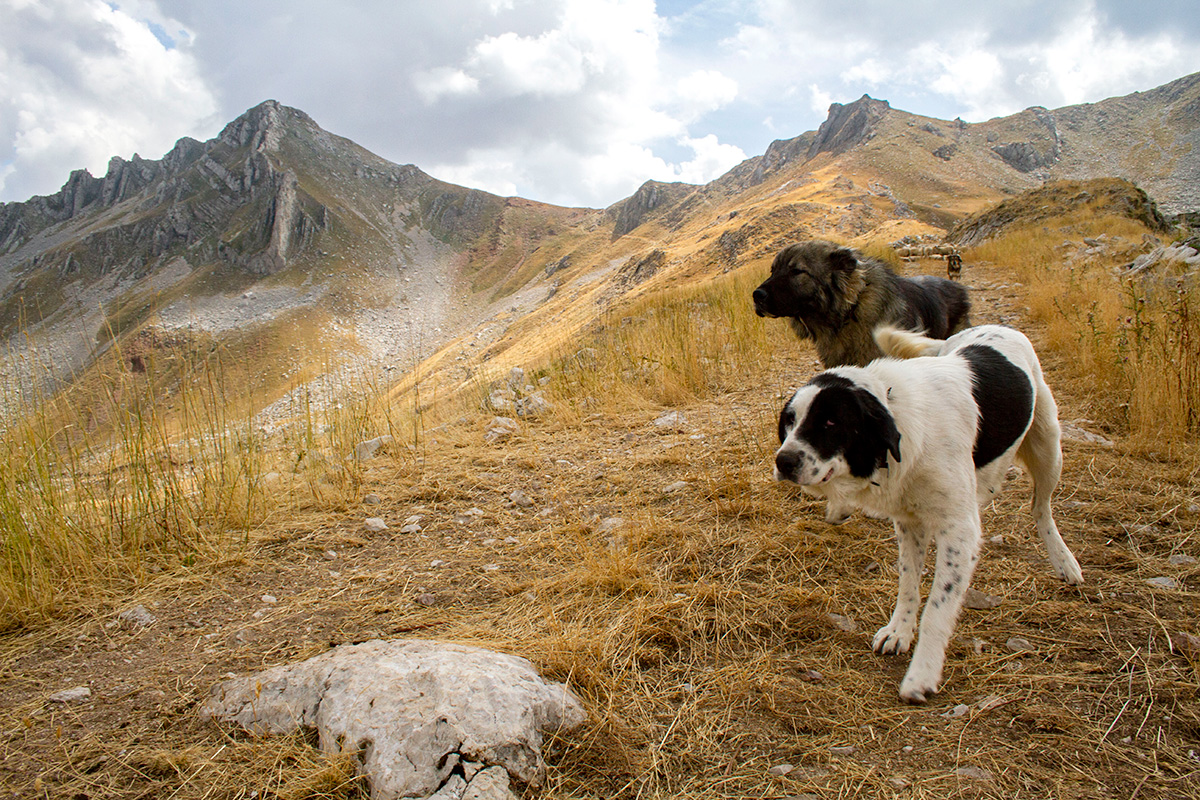
© Δημήτρης Βαβύλης / Ελληνική ΟΡΝΙΘΟΛΟΓΙΚΗ Εταιρεία
How to identify a poisoned bait?
A poisoned bait can be anything that can be consumed. It may be either very small, such as a fish, a sausage, or a meatball∙ or something larger, such as a dead sheep or a horse.
Usually, the perpetrators make the poisoned baits themselves using toxic substances, most often pesticides, which are illegal (although sometimes a legal substance might be used). In Greece, among the most “widely used” toxic substances are the Methomyl, the Carbofurn and the Endosulfan. Another commonly preferred substance for a poisoned bait is the cyanogen, which consists of cyanide salts and resembles small pieces of wax.
